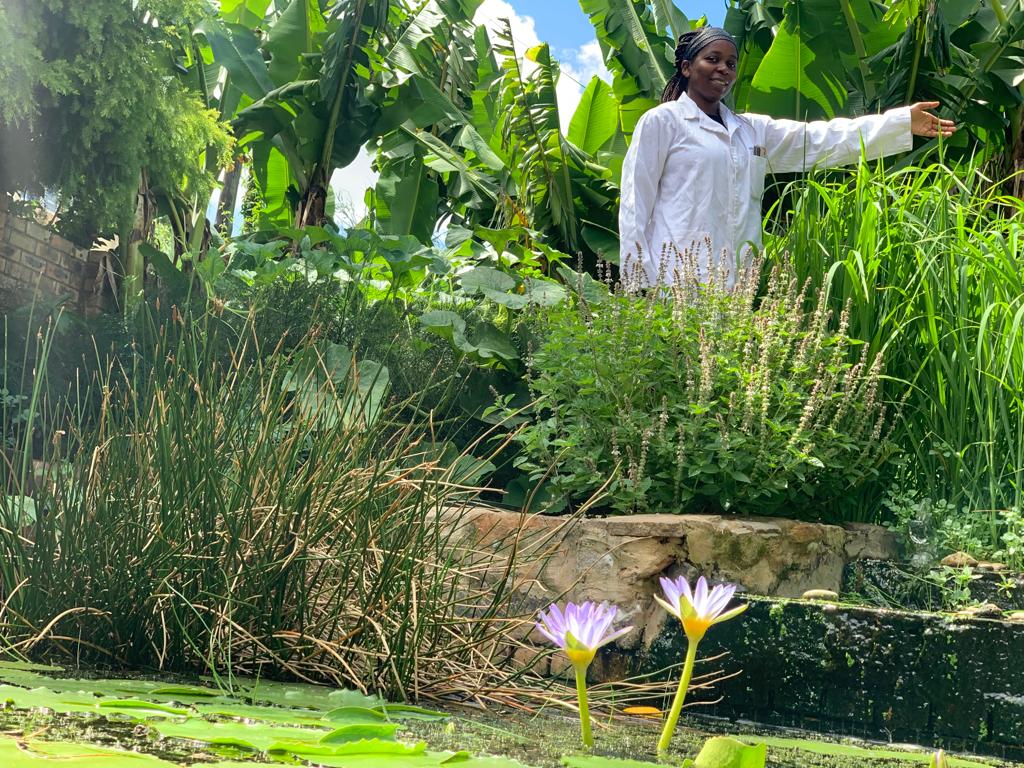Last Updated on March 9, 2023 by Tony Manhart
After careful research into the most disease-resistant evergreen trees, these are the best evergreen trees for privacy. Creating a hedge of disease-resistant evergreen trees comes with numerous benefits because the trees form a great sound barrier, don’t require the use of deadwood for a fence, and succinctly make the home aesthetically pleasing.
Instead of using fences, a great way to maintain your peace is by planting disease-resistant evergreen trees for privacy. Now, what these trees do is provide natural greenery to your yard, become a centerpiece, and ensure that no one can have a glance at your house.
As someone who is naturally shy but enjoys gardening, finding the best trees is important. I like the idea of being able to beautify my yard while also adding to my personal security. I will list several different trees based on the zones you may find yourself in. My personal experience spans 6a-13b which is a relatively broad range.
The Best Evergreen Trees for Privacy From Neighbors
#1: Green Giant Thuja and Emerald Green Thuja (Arborvitae)
The Green Giant Thuja and the Emerald Green Thuja are two variations of the American Arborvitae. These are a popular choice in the United States because they grow in multiple hardiness zones and are indigenous to the continent. According to the USDA, a hardiness zone is a region’s average temperature fluctuations that can affect plant growth.
These disease-resistant evergreen trees are thin, tall, and grow rapidly. And while the Green Giant Thuja can grow to be up to 12 ft. in height, the Emerald Green Thuja tops out at around 8-10 ft. Thus, your main decision when choosing between these two varieties should be on their growth rates.
The Green Giant Thuja will grow up to 3 ft. in a single year, while the Emerald Green will steadily add 12ft in a year. Nevertheless, Emerald Green tends to be healthier and requires less care.
Either way, one of these Arborvitae will be the best choice for an evergreen hedge because they are hardy, grow almost everywhere, and can be trimmed and pruned easily.
Plant your Emerald Green Arborvitae or a Green Giant Arborvitae.
#2: Evergreen Trees for Privacy, False Cypress
The False Cypress is one of the more unusual disease-resistant evergreen trees known for its stocky, wide build. These trees come in various shades of blue and green and are easy to grow and care for since they are not prone to disease. While some types are difficult to prune because of their winding branches, most of them have soft foliage.
False Cyprus grows to a maximum height of 3-4 ft., making them great for individuals who want shorter privacy hedges. Midwest Garden Tips recommends these evergreens be planted in hardiness zones 4-8.
#3: Evergreen Trees for Privacy, Douglas Fir
If you live in the United States, you would most probably have seen a Douglas Fir. These tall coniferous evergreens are beautiful and can grow up to 300 ft. tall (not in our lifetimes), although many averages around 12 ft. Their most defining characteristic, as studied by Oregon State University, is their 3-4 in. cones.
Douglas Firs are disease-resistant evergreen trees and grow well with little care. The most challenging piece of building an evergreen hedge for privacy is that these trees grow fast and tall. If you do not have a lot of experience in gardening and pruning, a fence of Douglas Firs can rapidly grow out of control. In terms of their overall status as disease-resistant evergreen trees, they are prone to weevils and spider mites, unpleasant pests that are difficult to eradicate.
Nevertheless, Douglas Fir is one of the tallest, broadest evergreens you can plant for privacy. These are the best choice for anyone who lives in a cold climatic environment and feels the need for some extra character and tranquility in their yard.
#4: Evergreen Trees for Privacy, Upright Juniper
Upright Junipers can grow to be between 10 and 15 ft. tall and around 5 ft. wide at their greatest point. They grow an average of 12 ft. a year, which means it might take a while for your evergreen tree privacy screen to be in place.
But, as Landscape America noted, the Upright Juniper is extremely hardy and one of the best disease-resistant evergreen trees. But, the biggest problem in planting them is seen when trying to prune and keep the thick branches and needles in check as they grow.
Nevertheless, I like the Upright Juniper as a hedge because you don’t need to plant a variety of them, they grow well next to each other, and they can survive in hardiness zones 3-8.
Plant your Spartan Juniper Spiral Topiary.
#5: Best Evergreen Trees For Privacy From Neighbors: Leyland Cypress
The Leyland Cypress has been one of the most popular trees for privacy hedges for decades. These trees grow rapidly and can reach heights of 50 ft. Thus, you can expect these to grow between 2 and 3 ft. every season, ensuring your privacy hedge is in place in little time.
Given that the Leyland Cypress has feathery foliage and a slender look, you can adjust the width of your privacy hedge as need be. Unfortunately, as detailed by the University of Maryland, the Leyland Cypress experiences numerous problems.
The greatest issue you will face with the Leyland Cypress is its high cost of maintenance. These trees are hardy but will require regular trimming, pruning, and a careful examination of the soil pH and nutrients if you want them to grow properly.
According to the owner of the Earthworks Nursery, these trees are also prone to insect infestations and diseases that slowly kill the branches, cause browning, and eventual death in some cases. You can see this in the following video.
The biggest advantage of using trees such as Leyland Cypress is that they grow fast and ensure that landscaping takes very little of your time. Still, you are going to have to deal with the unfortunate drawbacks as this is one of the least disease-resistant evergreen trees.
Find out How Often Do You Need To Water Newly Planted Trees?
#6 Trees For Privacy From Neighbors: Privet Trees
Privet trees belong to the genus Ligustrum. There are many species, and they have different hardiness but some can grow in zones down to Zone 4, and many will actually manage to be evergreen in these zones! In warmer zones, the tree is fully evergreen. Due to the wide variety of Privet species available you can choose species that are easily trimmed into a hedge a few feet high, to the Chinese Privet (Ligustrum lucidum) that can grow to 30 feet or more in height.
I have a love-hate relationship with privets. They look great. They however produce the most miserable flowers that stink. If you have a line of twenty or thirty trees and you have bees around, they will collect this honey and it is just really bad honey. I am sure somewhere, sitting in a tower, there is a monk that actually likes privet honey, but for the rest of us, this is a really bad honey tree. On the plus side, after the trees flower they get covered in lovely berries that are a magnet for birds. On the negative side of this, under every tree that those birds roost in, you will get a carpet of Privet seedlings in spring!!
Another thing about Privets is that they are generally really disease resistant. I have never seen a Privet tree get any disease at all!
#7 Tecomaria capensis – A Tree, Bush Shrub type plant for warmer zones 9-11
The Cape Honeysuckle or Tecomaria capensis is a beautiful plant that you can use to very rapidly create a barrier between yourself and a neighbor. The easiest method with these plants is to make a fence using old wooden pallets or chicken wire and plant these plants at a distance of one plant every two feet in spring. They will grow in nearly any soil, but a well-developed loam with compost will ensure faster growth.
This plant can grow at a high rate if given regular watering and good mulch. If you allow clumps to grow, they actually grow in a fashion like a small shrub or tree – but you can also prune and create a hedge eventually. These “trees” are an incredible home for birds, insects, small useful animals, and so on. They are a refuge for toads and frogs to hide in by day, they provide abundant nectar for bees and they build a thick layer of compost below them with time.
Within two years of planting, you can count on these providing a solid barrier at least 6 feet tall, and, with good care closer to 10 feet tall. I would work on a low estimate of 3 feet a year, but you can push this plant more! Within five years it will be a thick row that blocks wind and is nearly impenetrable. The tree provides abundant trimmings that can be run through a small garden chipper and used as mulch for other plants. The wood chips break down rapidly and add a lot of goodness to the soil, especially in the vegetable garden. Tecomaria chips are one of my secret tricks to get a really great pepper crop each year!
#8 Bananas Trees for Privacy from Neighbors – Zones 9a and upwards
I have had a lot of luck with banana trees as a method to block out my neighbors. These fast-growing trees lend a lovely tropical feeling to my non-tropical garden. I place a three to four-foot-deep mulch under my bananas each year and this creates heat that keeps the trees healthy on cold winter days. If you grow black frost-tolerant cultivars you can probably get by in zone 9a – they will look a bit funny after winter but will recover. In one 9b they will make it through fine – I know this from experience as I grow in this zone.
Dr. Mabasa, who also writes for this blog, with my row of banana trees behind her. These block out both neighbors’ houses and provide hundreds of pounds a year of bananas to eat.
Conclusion – most durable evergreen trees
We live in a world where privacy is increasingly eroded by electronic cameras, drones, mobile phones, and so on. Sometimes, it is nice to create an illusion of privacy, and a garden is that place we can create our little adventures and fantasies in. I have over the years planted many hedges and windrows, and watching these grow now, I realize that privacy is as much about not being seen as it is about creating a microclimate and a little illusion in which we live. A bubble. Planting the right hedgerows is the first big step towards creating your own microclimate – your own little world to live in.
FAQs
What can I plant to block neighbors view?
The following are some plants that can be used to block neighbors view.
The young 'Clematis' is an evergreen plant and will bloom all year round. It is a fast-growing plant that can grow up to 10-15 feet in height. This flower will produce fragrant white flowers and produces red berries once it matures.
The 'Lantana' has large and attractive flowers with a rich color palette of purple, mauve, lavender, cream or yellow on its stems. It's also one of the most popular flowering plants in the world due to its large size and abundance of blooms.
What is the fastest-growing evergreen tree for privacy?
Evergreen trees are those that are perennially green and can be found in many different environments. They can tolerate a range of climates and grow in dry or wet conditions.
The fastest-growing evergreen tree for privacy is the pine tree. It has a long-lasting needle structure and pinecones which allow it to shed light through the needles. It also has a thick bark that protects it from insects and fires, making it an ideal evergreen tree for privacy.
What is the most disease resistant evergreen tree?
The most disease resistant evergreen tree is the Douglas Fir. It can resist diseases like Dutch Elm Disease, Phytophthora root rot, and sudden oak death without any treatment. It also takes around three years to grow a big tree.
The Douglas Fir is a fast-growing evergreen tree that has been used for centuries in North America as timber to build homes and ships. Its tough, durable wood makes it an ideal choice for construction work or for large applications like log cabins or coffins.
The Douglas fir is the most disease resistant evergreen tree because it has no major branches near its trunk so pathogens cannot find their way to other parts of the tree.
How far apart do you plant privacy trees?
There is no right answer to this question. To know how far apart you plant trees, you must consider the soil, the trees’ size and other factors.
There are many factors that affect how far apart you should plant privacy trees. For example, if your backyard has a lot of shade and you need to grow a certain type of tree there, it’s better to plant it closer than if it’s a sunny area with little or no shade.
Can I plant a tree next to my fence?
In most cases, it is not possible for you to plant a tree next to your fence because the roots will be able to grow underneath the fence and cause damage. In these cases, planting trees in the middle of your yard is the best option.
What tree is good for privacy?
Some trees have a lot of leaves and branches that can help conceal your privacy. The weeping willow is a tree with dense shade and foliage that can provide good cover in urban areas.
-The weeping willow: It has delicate, weeping white flowers, which are good for hiding in the springtime. It has also lots of leaves and branches to provide cover from predators like birds and squirrels.
-The beech tree: It has broad, low-hanging branches that can block out your view to the ground and other trees.
Tony Manhart is a passionate gardener who has been tending to gardens for over 20 years. He takes pride in creating beautiful outdoor spaces with plants, trees, and shrubs that can thrive in any environment. He loves to share his knowledge with others and has taught classes on gardening basics and advanced techniques. He is committed to sustainability, using natural and organic methods to create and maintain gardens. He also works with local organizations to create green spaces for communities. When he’s not gardening, Tony enjoys hiking, reading, and spending time with his family.

![8 Best Disease-Resistant Evergreen Trees [Protect Your Privacy] 1 disease resistant evergreen trees](https://www.gardeningdream.com/wp-content/uploads/2019/06/Protect-Your-Privacy-With-the-Best-Evergreen-Trees.jpg)




